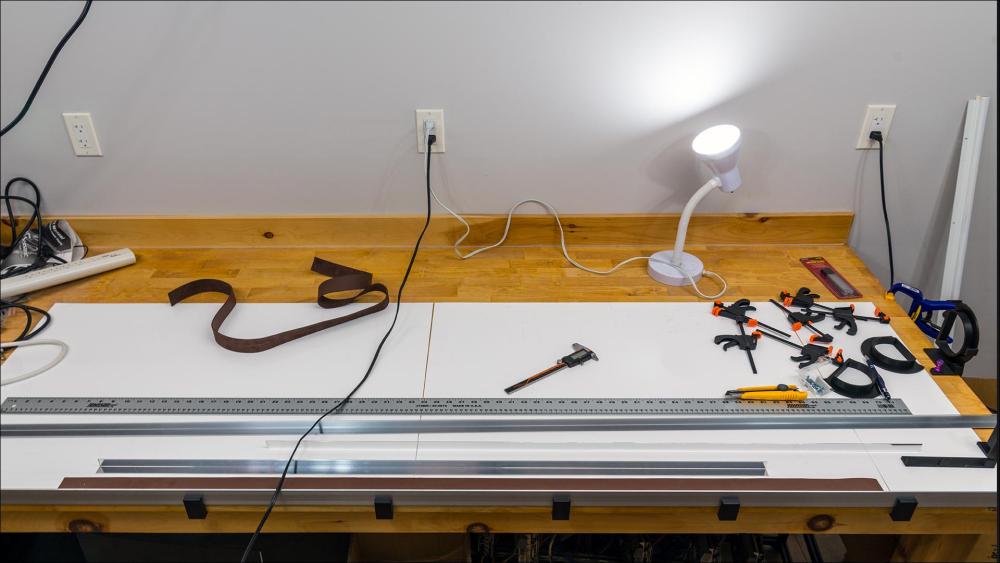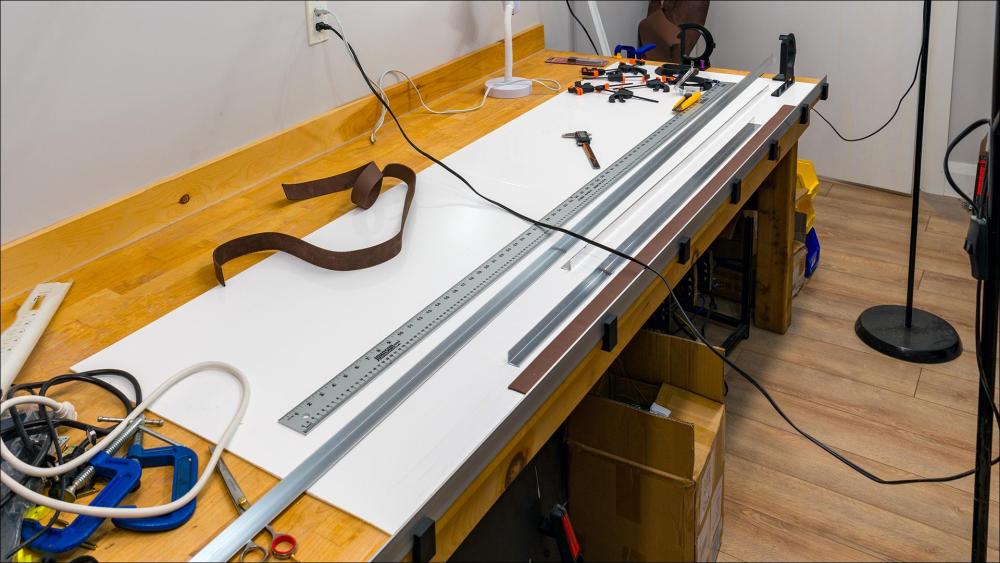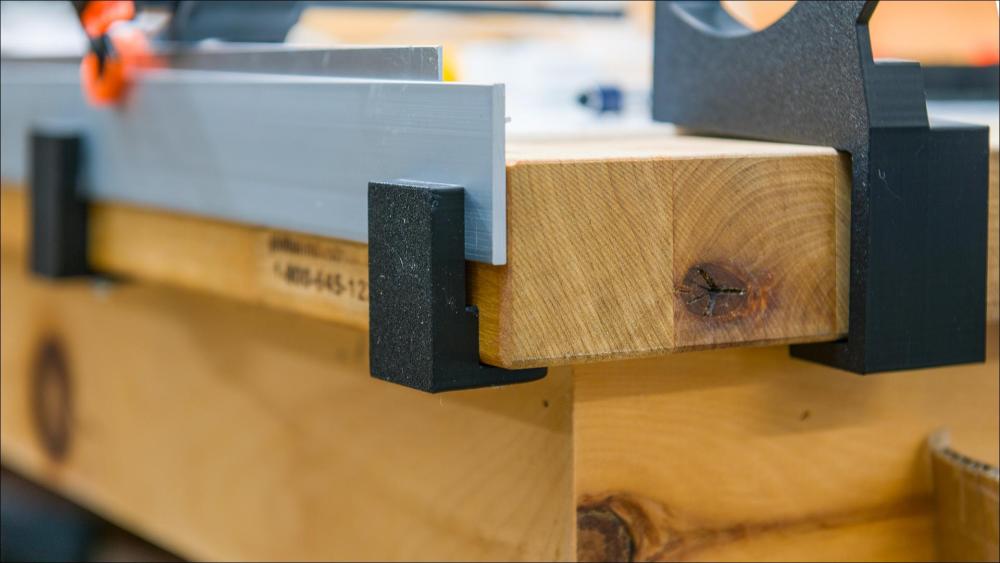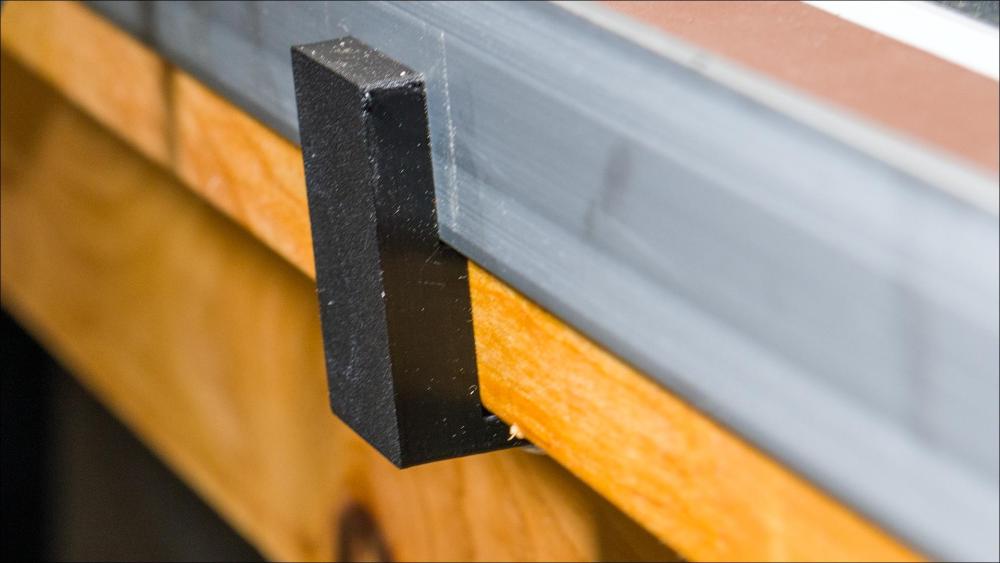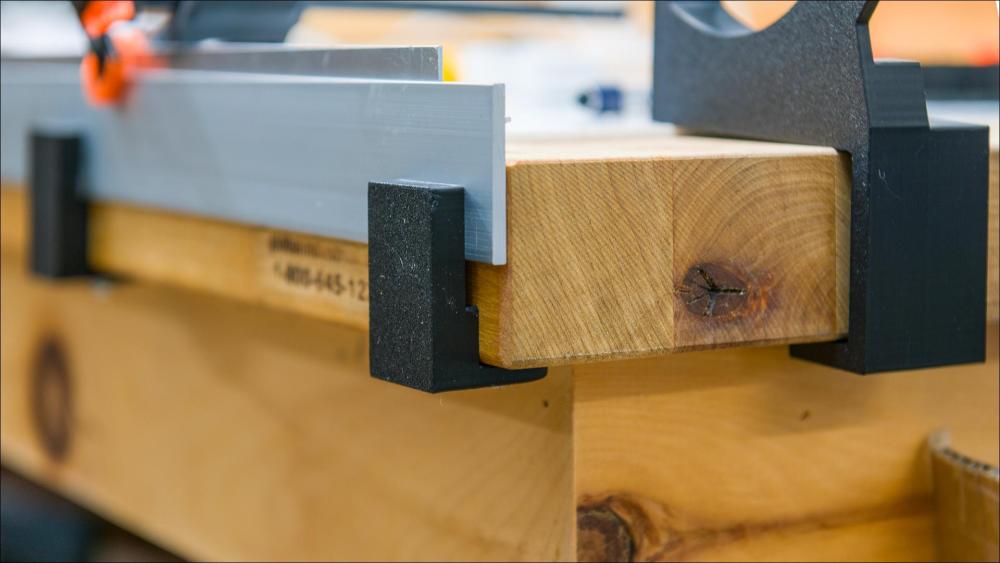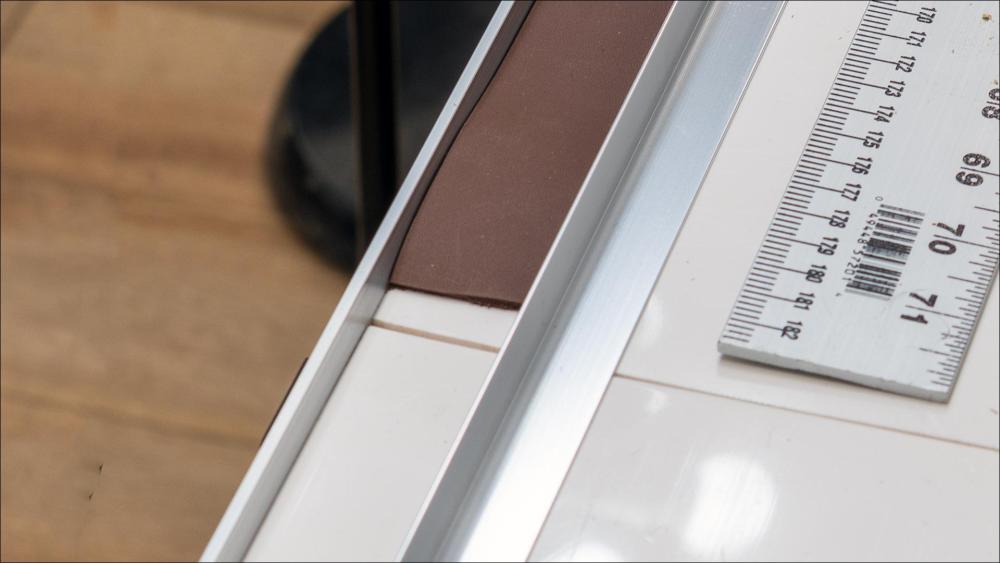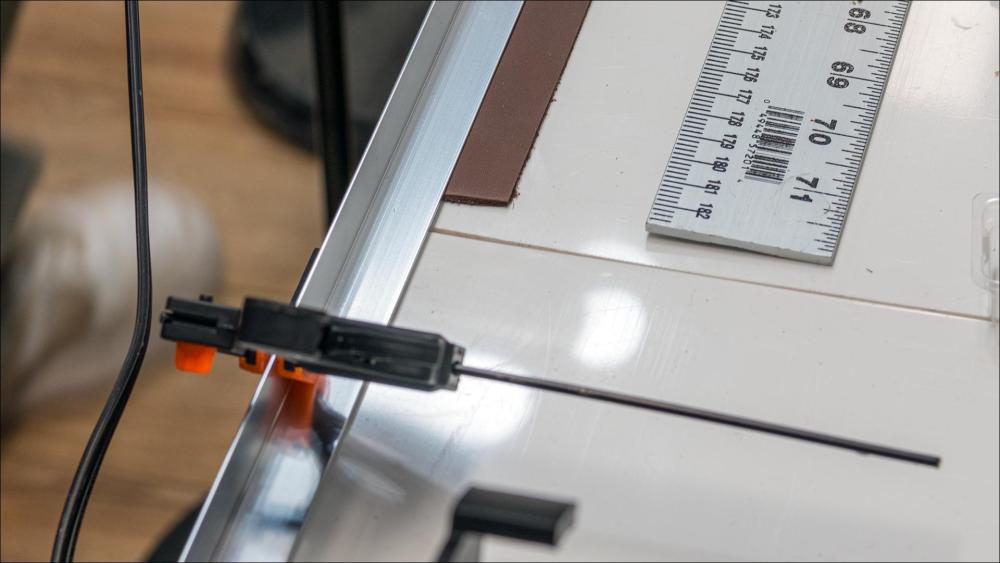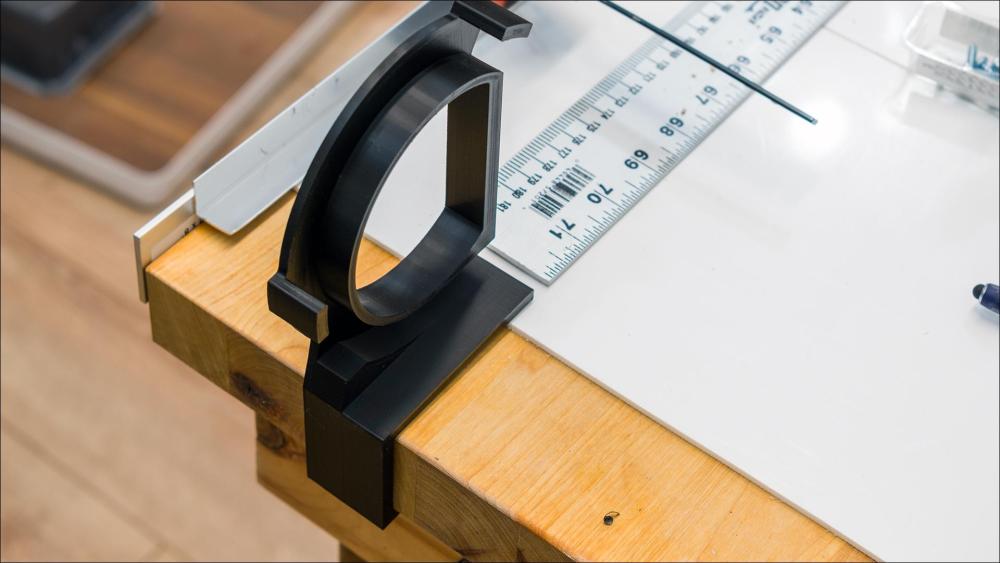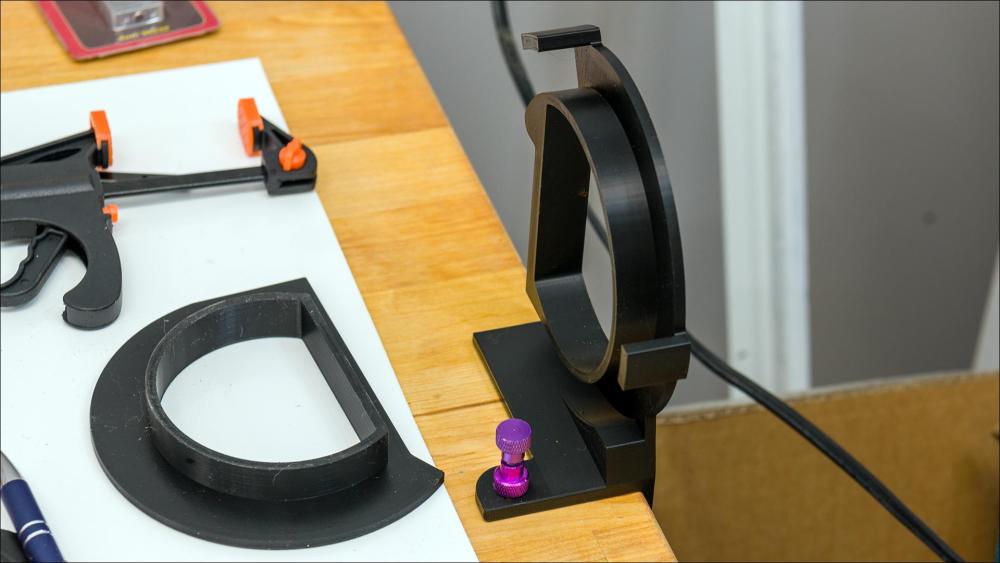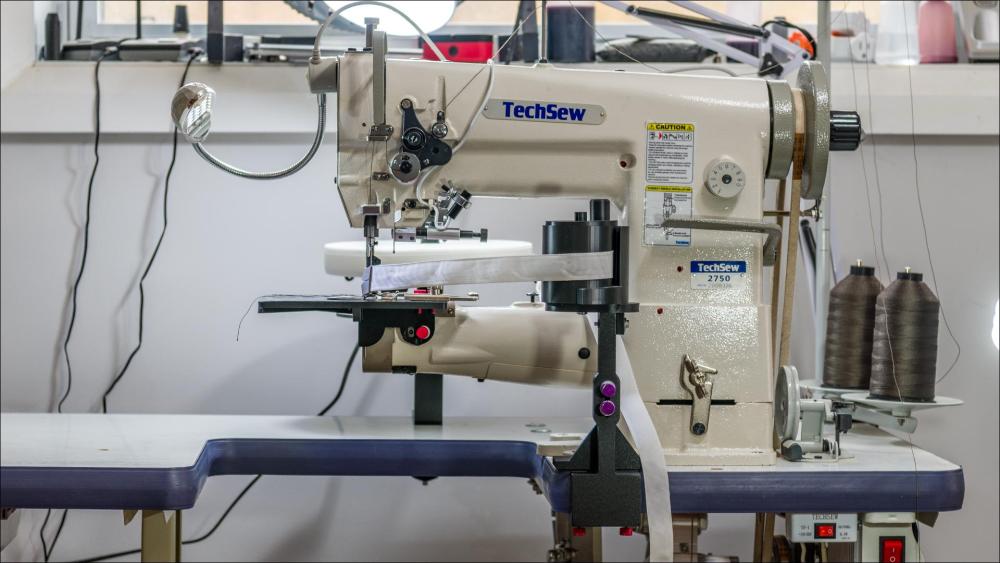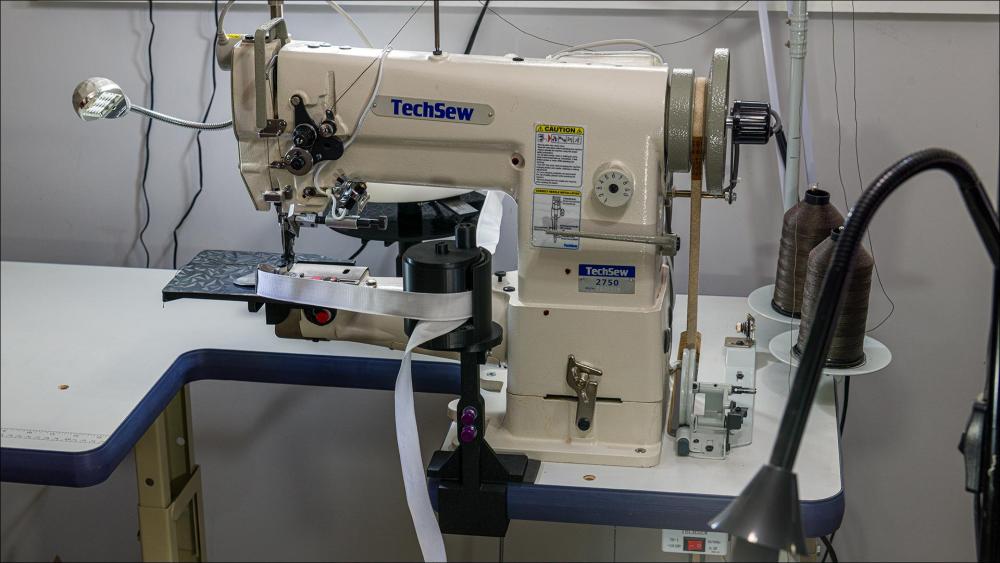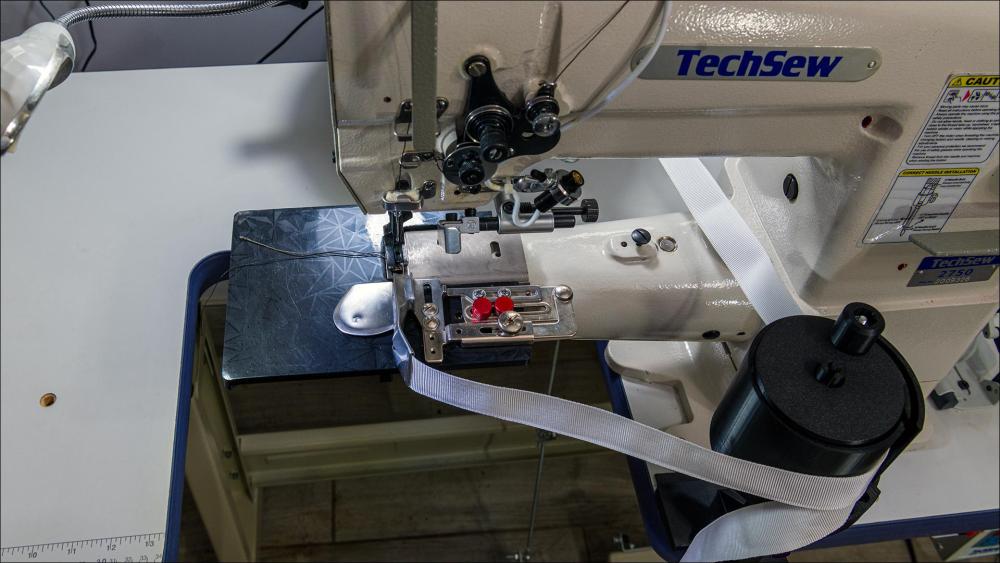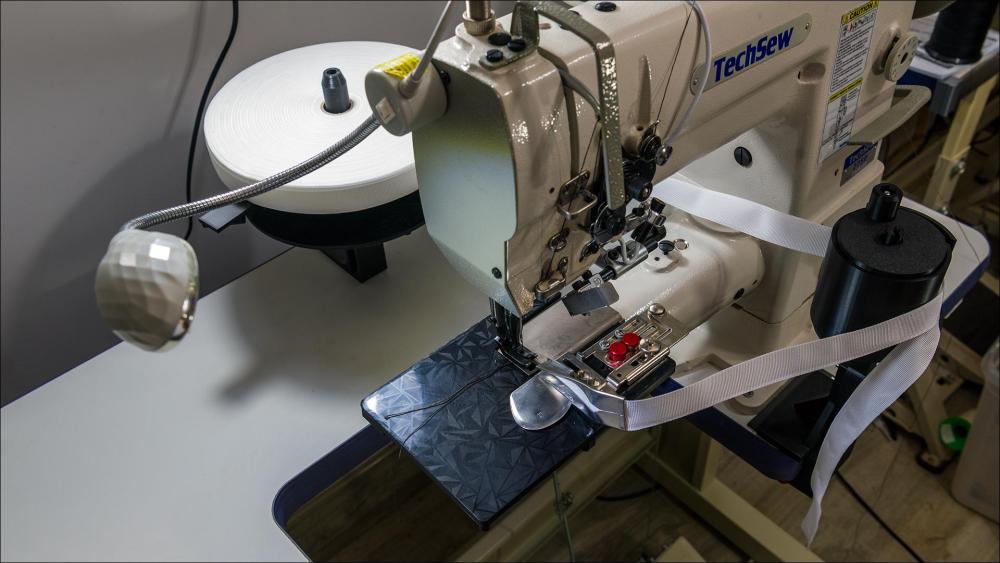
kgg
Contributing Member-
Posts
3,302 -
Joined
-
Last visited
Content Type
Profiles
Forums
Events
Blogs
Gallery
Everything posted by kgg
-
I sold my Consew 206RB-5 about a week ago and she finally was able to picked up the machine this morning. Normally I help to strip the machine down for loading, cash on the barrel head and it's gone. Since these people only live about 15 minutes away and this is the first industrial machine they have owned I offered (mistake) to tag along and help get it all setup again. Neighborly thing, sort of peace of mind for me knowing it would get setup properly and working properly at their location. The sewing machine was all dolled up with that pretty (useless) drive belt side cover which can be a pain when installing the machine back into the table if you haven't done it before. The machine head was removed from the table and secured on it's backside with the presser foot in the down position on the back seat and the table / motor was slide into the back of their pickup and strapped down. After we got the machine and the table mated back together the first questions were "How come the light doesn't work? Where's it's plug?" I explained that light was plugged into the servo motor, when the servo motor is turned on the light comes on. I further explained this is a nice feature so you know that the machine will not magically start sewing if her dog a nice little springer spaniel, decides that the foot pedal is at that perfect angle to rest his head for a nap. I went on to explaining the various normal things like top threading, how to set the bobbin tension, oiling, filling and installing a bobbin, installing a needle and then getting her to do it. Just the usual stuff. While the machine wasn't turn on and we were discussing something neither of us notice the dog had laid down with his head on the pedal and when she just reached over to turn the machine on off to the races it went. Luckily we had some fabric under the presser foot. It startled both of us for a second. Now she knew what could happen in the middle of the night. What surprised me the most was this lady sews in a industrial setting and regularly uses a Juki DNU-1541S and a Consew RB-5 which sounded good and I figured I'd be home in under an hour. Oh NO, nobody ever showed her the basics like: i) holding the top and bobbin thread for at least three stitches on starting a seam before reversing forget about starting the seam three stitches in and going into reverse before going forward. ii) how to clear a thread jam iii) how to properly get the bobbin thread up after replacing the bobbin iv) filling a bobbin while sewing v) tying the ends of the top thread together and pulling the new thread through to the needle vi) proper needle to thread size vii) oiling a machine viii) when to change a needle ix) which way to install a needle x) using two spools of thread with one spool dedicated for winding the bobbin You have to remember I'm not a teacher it just ain't in my DNA so that stuff it's really outside my comfort zone. I guess the moral of the story is never to take anything for granted. Maybe it just me but that's my chuckle / penance for this Sunday. kgg
-
Thank you. I do like my Bambu Lab X1C 3D Printer it has a much better print quality, more accurate and 10 times faster then PRUSA gear. kgg
-
Thank you @DieselTech. The first two photo's are the best overall I could get of the butcher block table which is basically half of the 16' long section on that wall of the room. In that room I have about 40' (12.2m) of table used for other things. The butcher block itself is 1 3/4"(44.89mm) thick X 36" (915mm) wide which I use for cutting. Also if you noticed the electrical outlets they are placed 46" (1.17m) above the floor to the top of the cover plates with six separate 20 amp circuits in that room. As a note all my 15 and 20 amp receptacles in the house are at the 46" (1.17m) mark. The steel ruler in both photo's is 6' (1.83m) long x 2" (50.8mm) wide. The last two photo's are closeups of a the two styles of supports. One shows the supports that just hold the flat plate tight to the edge of the table and the other shows a support that also extends the flat plate to about a 1/2" (12.7mm) above the white colored 1/8" (3.37mm) thick HDPE cutting boards. kgg
-
I had been cuting on a 3' x 8' section of one of my butcher block tables and always struggled with getting an acceptable straight cut for things like straps etc. I didn't want to upgrade to a proper leather slitter machine as the number I do is limited and is for dog leads. So here is what I done. I used: i) 1/8" HDPE is used as a cutting board left over from doing some upgrades in the dog boarding kennel ii) 3/4" x 3/4" metal 90 degree angle edging also left over from the dog boarding kennel upgrades iii) 1 1/2" x 1/8" x 8' flat aluminum flat plate which I got at Homedepot for about $38 CAD ( $28 USD) iv) designed and printed 8 edge supports for the flat plate. Four of these supports are to hold the flat plate tightly to the front edge of the table. The remaining four supports also hold the flat plate tightly against the tables edge but also extends the flat plate up about 1/2" above the HDPE cutting board. The supports are spaced about 12" apart along the tables 8' front edge and attached to the table on the underside. This mounting prevents damaging the front edge of the table and allows the flat plate to be removed by simply sliding it up and out of the supports for removal. To cut a straight edge on a piece of leather I simply remove the flat plate then clamp it down on top of the leather and cut along the edge of the flat plate with a cheap dollar store utility knife. Gives a nice clean straight edge. The next step is to put the flat plate back into the edge supports, push the leather up against the flat edge and use whatever size of flat plate or 90 metal edge I need for cutting. The result is a nice clean strap with a straight edge. The two black doodads on the table are what I came up with and 3D printed to provide consistent dog lead handles and end loops for English style kennel leads and standard clip leads made with either rope or leather. All comments are appreciated. kgg
-
I wonder could this be caused by a bobbin case tensioner spring gone weak, over tightened and bent or a groove worn in?? kgg
-
Cobra class 4: 346 bonded polyester thread? Help!
kgg replied to DieselTech's topic in Leather Sewing Machines
The question: The V346 may slide nicely through the eye of the needle but... is the hole made by the needle large enough to allow for the V346 (top and bobbin) from being caught by the leather as this would become more critical as the thickness of the item being sewn due to more surface area that could act as a catching point??? kgg -
Cobra class 4: 346 bonded polyester thread? Help!
kgg replied to DieselTech's topic in Leather Sewing Machines
A #25 needle is good for V277 but for V346 a #26 would be the choice ( Needle / Thread Chart: https://www.tolindsewmach.com/thread-chart.html ) Probably to small a hole created by needle for V346 polyester. I would first change to a #26 needle like @RockyAussie suggested, readjust the presser foot tension and give it a try. Also check and see if there are any burrs in the top thread path like a guide, the eye of the needle, presser foot, feed dog etc. If it works great if not then change to a new spool of thread. kgg -
You right the needle should not hit the hook. I would suggest either calling the dealer and getting a copy of the engineering manual or looking at the Juki DNU-1541 engineering manual to get some ideas on the hook to needle timing and relationship. kgg dnu1541.pdf
-
My brief summary so far: 1) So far there are number of very nice table tops commercially available. 2) The main drawback from what I see for my needs is i) their inability to handle any of the attachments that are readily available and less expensive for the flatbed machines and ii) most require the use of a drop down edge guide, which I don't like using. 3) Most like the larger size table tops. kgg
-
Adler 205-370 help — Random Bottom Twisted Stitch
kgg replied to adventureleather's topic in Leather Sewing Machines
my first couple of thoughts are: i) bobbin installed backwards ii) bobbin wound with thread that didn't have a chance to uncoil properly iii) incorrect bobbin tension. Here is a good video, check out from the 9:43 minute mark. kgg -
The 140 (#22) is NOT the correct size for V207 thread. The 140 (#22) needle is good for V92 in thicker material or V138 in thinner. The correct size would be a 180 (#24) needle. When the needle is to small two things happens 1) the hole is to small and 2) both the leather and needle will fray the thread and probably cut /break the thread. Also are you using system 135x16 or 135x17 needles? For leather you need to use system 135x16 and for fabric 135x17. Here is a link to a needle size to thread size chart: https://www.tolindsewmach.com/thread-chart.html Also check the thread path from the top thread spool to the the eye of the needle. Please post a couple of photo's as there could be something else amiss. kgg
-
Nah, once stuff hits that magic line the shipping goes to hell, duty, taxes, brokerage fees and whatever else they can think of. A lot of us that live close to border have a US address and drive across to pick items up that way we only usually have to pay at most the taxes. Example: If I was to buy a new Consew 206RB-5. Option 1: Buy from a US vendor at retail for about $1500 US and ship to my US address the cost would be $1500 plus say $250 USD or about $2400 CAD then add $312 in Taxes to drive it across the border for a total of about $2700 CAD. Option 2: Have the Ontario Consew distributor bring one in and the price goes to $3600 CAD (tax in) plus either drive 4 hours each way or pay another $300 for shipping for a total of $3900 CAD. Hum which option??? kgg
-
1. Directly from American & Efird Canada 2. American & Efird Canada 3. Depends on the thread size and project 4. Typically three, Black, White and Brown in V92, V138 and V207 5. Approximately $70 CAD for a 1 lb spool 6. Bonded Nylon and Bonded Polyester and it depends on the amount of UV or harsh chemical exposure. kgg
-
I can see that as a market. I would just wonder how it would hold up to "road rash". I was thinking more for the average joe consumer and considering that in the UK winter average temperature is above 0 Celsius where in Canada it's - 15 and gets down to -50 Celsius without a wind chill factor. kgg
-
I would first try and cleanup the spot in the slot and put a drop of oil in the slot to see if the noise goes away. I wouldn't try and bevel the bushing as yet. kgg
-
Very, very nicely done. I would think the coat would be better suited for colder winter climates like we have in Canada and would probably be overkill for the UK climate. kgg
-
I would look at the roller bushing and if it has no signs of uneven wear I would reinstall it then I would coat it with some synthetic oil and see if the noise is goes away. If it goes away you know to oil / grease it more often. kgg
-
I viewed your video and would be interested in seeing the motor and pedal setup. kgg
-
Necessity is the mother of invention. Let those creative juices run. kgg
-
Here is my take of a mini nose table I designed about three years back for a Kobe LS-1341 machine and it's recently revamped version. The photo's are of it installed on a Class 341 Juki clone the Techsew 2750 Pro. This was designed using an autocad program and 3D printed using 3D870 filament. For these photo's I installed: 1) The table top to the cylinder arm by one bolt on the front, the red colored bolt, and a second bolt on the backside. A third bolt could be installed on the front as well. 2) A 1" raw edge binder to a swing-way attachment and bolt the swing-away to the table top. The two red colored bolts that hold the swing-away to the table top are screwed into brass knurled nuts embedded into the the table top. The swing-away that I like has an adjustable stop that bumps up against the front edge of the binders head. Most of the ones you see don't have this additional bar or the ability to install one. The features I needed for my needs. Table top: 1. Has to be very simple and quick to install or remove. Installation / removal of two bolts. 2. No flexing of table top. Surface area 5" deep x 5" from center of needle to the left. 3. No oxidation. I have a aluminum table attachment which requires periodic cleaning to remove the oxidation. 4. Super slick surface table top surface. 5. Table top has to accommodate all off the shelf inexpensive flatbed attachments that would be used on any standard industrial flatbed machines like binders/ edge guides / flat folders / hemmers etc. Binding: 1) Horizontal flat webbing/binding tape holder: i. Use standard flat webbing/binding tape or left over ends from small runs. ii. The standard webbing/binding horizontal tape holder has to be simple and quick to install or remove. Installation / removal done by tightening / loosening of one bolt. 2) Webbing / Binding tape Guide: i. The webbing tape guide cup has to be simple, quick to install or remove and fit all industrial sewing machine table tops. Tightening / loosening done with two bolts. ii. The webbing tape guide cup able to handle up to 2+" tape on the exterior when used with the horizontal tape holder or on the interior bobbin for small runs. iii. The cup's internal bobbin be able to be manually filled or removed then filled by the sewing machines bobbin winder and self adjusting for the width of the tape. kgg
-
Very nicely done. kgg
-
The problem these days is an awful lot of equipment regardless of price or it's label is coming out of Chinese factories producing the same or similar items with similar specs. Your Harbor Freight is very similar to our Princess Auto or Canadian Tire products up here in Canada. I have equipment from Harbor Freight, Princess Auto and Canadian Tire and it works quite nicely for a hobbyist without the hefty price tag of the supposedly better brands. Basically it comes down to the amount of use you plan on doing with a particular piece of equipment. Items that I'm are going use occasionally I will go the cheaper route and make do. Example: I just ordered a set of 10" End Nipper Pliers as the 8" inexpensive Chinese ones I have are hard on the old hands when cutting #9 rivets. The 8" work just fine on #12 rivets. I ordered the 10" off Temu for $9.99 with Free shipping. I could have gotten the same ones right down to the color of the handles from Canadian Tire for $45 plus sales tax or bought the brand name Channellock 10-in Construction Cutting Pliers from Rona for $67 plus tax. Since I rarely have to cut more then 20 rivets at a sitting the inexpensive ones will probably do. I agree. kgg
-
Thread question Singer 111G156 older recomendation
kgg replied to bnsmith's topic in Leather Sewing Machines
Here is a quick cross reference showing some of the various thread size standards from a reputable North American thread manufacturer ( A&E ). Link: ( https://www.amefird.com/wp-content/uploads/2009/10/5-Thread-Size-Comparison-Chart-2-4-10.pdf ) My thoughts: I think the Cotton thread referenced in the manual was for Thread Weight not Cotton Thread Count. The Thread Weight basically came from a Japanese standard called the Gunze Count Standard which the US adopted but all weights are not equal. A 50wt with 2 strands (50/2) is lighter weight-wise then 50/3 but both would be labelled as 50wt. Thread and it's standards is a very deep dark rabbit hole. Depending a lot on which country or continent you are located. In North America the general rule is the US "V" size or the "Tex" size while Europe uses the metric system and their thread would be shown as "Tkt" or "M" or just a number. Then you have Canada where you have a real mix of metric, Imperial and US measurements depending on what country the item is being supplied from. Often thread is labeled in both metric and US standards. I use the "V" system which is based on size rather then the "Tex" as "Tex" is based on how much 1000 meters of thread weights in grams. If a machine can handle a #22 (140 metric) needle I know it can handle V138 (M20) thread in thin material or V92 (M30) in thicker material. kgg -
Manual Strap Cutter Machine: Opinions/Recommendations
kgg replied to DieselTech's topic in Leather Machinery
Maybe consider get some extras or having a couple 3D printed. kgg


